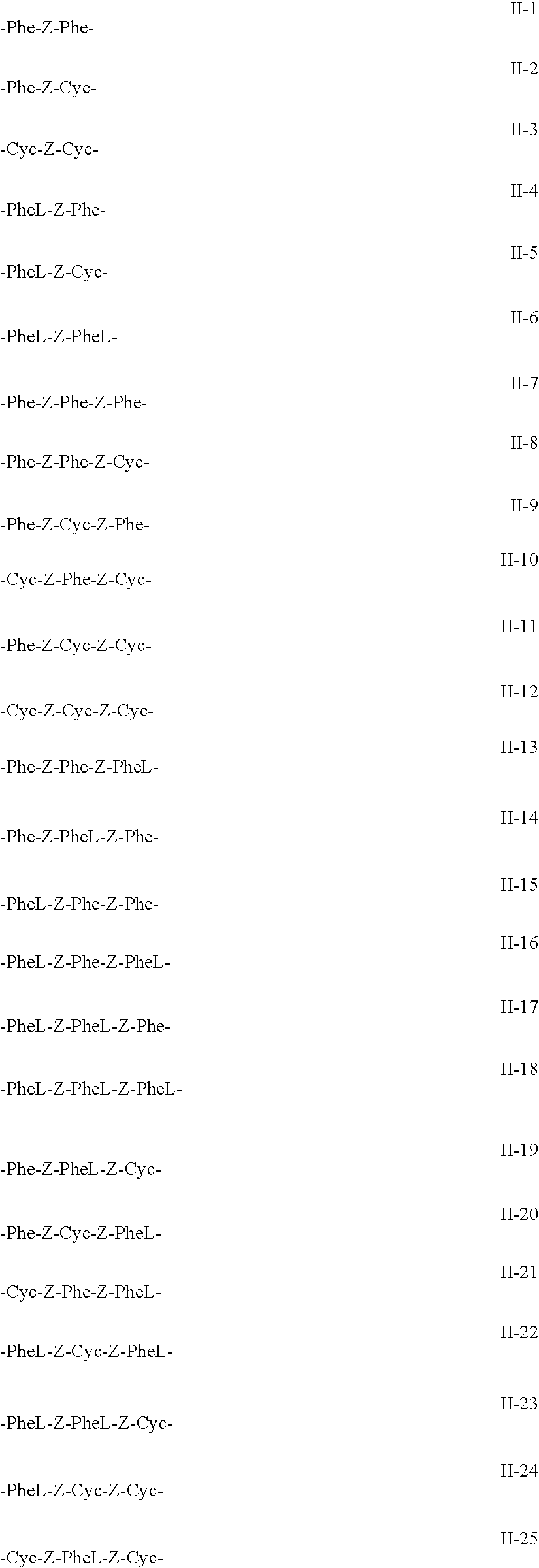Method of preparing a broadband reflective polarizer
a reflective polarizer and broadband technology, applied in the direction of polarising elements, lighting and heating apparatus, instruments, etc., can solve the problems of high temperature, unsuitable in particular for mass production, and inability to achieve uniform alignmen
- Summary
- Abstract
- Description
- Claims
- Application Information
AI Technical Summary
Benefits of technology
Problems solved by technology
Method used
Image
Examples
example 2
Two broadband reflective polarizers were fabricated from the optimized set of mixtures 2a, 5a, 6a, 9a, 10a, 11a, 12a and 14a as follows:
The mixture 2a was coated and cured onto a TAC film as described in Example 1. Each of the mixtures 5a, 6a, 9a, 10a, 11a, 12a and 14a was then subsequently coated and cured as a thin layer in the above sequence directly onto the previously cured mixture. In each case, a sheet of Melinex 569.RTM. was applied on top of the coated unpolymerized layer to improve alignment, and was removed after polymerization of the layer, before coating the next layer. This yielded a multilayer cholesteric polymer film P1 comprising a stack of polymerized layers 2b-14b, as schematically depicted in FIG. 4.
The transmission versus wavelength spectrum of the resulting polymer film P1 was measured within a wavelength range from 350 to 850 nm. The maximum and minimum edge wavelengths of the reflection band, defined as the points with the highest slope, were found to be 730 ...
example 3
The polymerizable mixtures C and D were prepared
Irgacure 369.RTM. is a commercially available photoinitiator (from Ciba Geigy, Basel, Switzerland).
The mixtures C and D were blended to give four different mixtures 15a-18a with different reflection color. The composition, central reflection wavelength .lambda..sub.0 and color of mixtures 15a-18a is given in table 4.
A broadband reflective polarizer was prepared by coating and curing mixture 15a as a thin layer onto a PET substrate, and subsequently coating and curing layers of mixture 16a, 17a and 18a in this sequence on top of the previously cured layer. The multilayer reflective polarizer P3 thus obtained exhibited a total thickness of 22 .mu.m and the following sequence of polymerized layers 15b-18b
P3: PET-15b-16b-17b-18b
The reflection spectrum of polarizer P3 is shown in FIG. 7, with T indicating the transmitted and R the reflected light. The polarizer exhibited a broad reflection band with a bandwidth of about 290 nm and a central...
example 4
The mixtures C and D from example 3 were blended to give the mixtures 19a-22a with different reflection color. The composition, central reflection wavelength .lambda..sub.0 and color of mixtures 19a-22a is given in table 6.
Two broadband reflective polarizers P7 and P8 were prepared as described in example 3, with the sequence of polymerized layers 19b-21b being
P7: TAC-PSA-19b-20b-21b-22b
P8: TAC-PSA-22b-21b-20b-19b
The reflection spectrum of polarizers P7 and P8 are shown in FIGS. 9 and 10 respectively, with T indicating the transmitted and R the reflected light. The polarizers exhibited a broad reflection band with a bandwidth of 338 and 340 nm respectively and a central reflection wavelength of 637 nm. The optical performance of the reflective polarizers P7 and P8 was measured as described in example 2. The results are shown in table 7.
PUM
 Login to View More
Login to View More Abstract
Description
Claims
Application Information
 Login to View More
Login to View More - R&D
- Intellectual Property
- Life Sciences
- Materials
- Tech Scout
- Unparalleled Data Quality
- Higher Quality Content
- 60% Fewer Hallucinations
Browse by: Latest US Patents, China's latest patents, Technical Efficacy Thesaurus, Application Domain, Technology Topic, Popular Technical Reports.
© 2025 PatSnap. All rights reserved.Legal|Privacy policy|Modern Slavery Act Transparency Statement|Sitemap|About US| Contact US: help@patsnap.com



